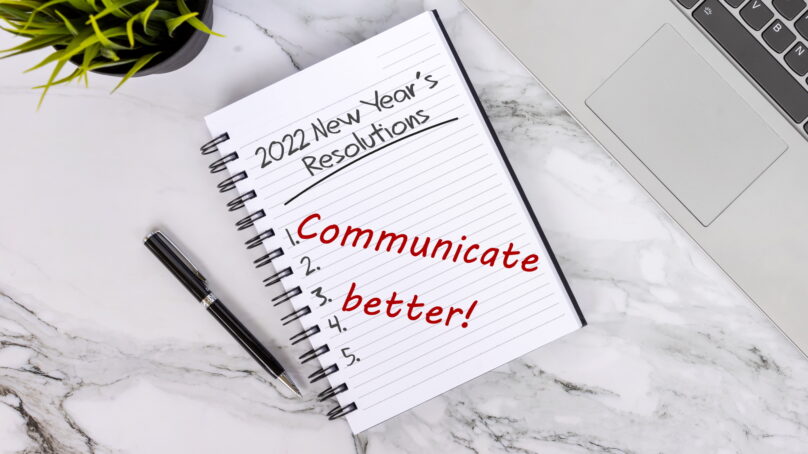
Coming up on the new year means thinking about our resolutions. About all the things we want to accomplish by the end of next year. We are thinking about our physical, mental, emotional, and spiritual health. “I am going to lose 10 pounds,” “dedicate 15 minutes daily for meditation,” or “go to church more often.” We may be thinking of our financial goals. “I am going to increase my Christmas budget and use direct deposit to save,” “I am going to buy that new car.”
With a little resilience, our goals may help us to feel gratified. We may lose the weight we wanted. We may feel more grounded and centered. We may experience long-term benefits from these new habits or at least be driving around in a fancy new ride! But have you ever heard anyone say they are making mastering a communication style (or more than one) a New Year’s resolution?
A firm understanding of the various communication styles helps one to establish credibility, influence others, and build relationships. I don’t know about you but that sounds like a recipe for wellness in all areas of my life. Now typically I don’t make New Year’s resolutions. But as Steven Covey would say, “begin with the end in mind.” I thought I would give it a try. My resolution? Understand communication styles to improve the quality of life for myself and others.
Where do I start?
“Hey Siri, what are the primary communication styles?” Unfortunately, this time asking Siri was like shaking a magic 8 ball. Hundreds of descriptions for communication styles appeared. Since I am a Toastmasters member, a nonprofit educational organization that operates clubs worldwide for the purpose of promoting communication, public speaking, and leadership, I decided to focus on the Toastmasters definitions: Supportive, Initiating, Direct, and Analytical.
Supportive
People with a supportive communication style dislike change. They may appear indecisive. They are often perceived as careful, patient, and amiable. Due to their active listening skills, others see supportive communicators as dependable and loyal.
When interacting with a supportive communicator I know they are going to succeed if I use a calm, steady approach. They will respond well to reassurance and affirmation. They may need encouragement or a clearly defined framework in order to feel comfortable expressing their thoughts, opinions, and feelings.
Initiating
Initiating communicators are rewarded by interacting with others and sharing stories. They might be described as a people person. You will know when you are working alongside an initiating communicator when they are assessing both what you think and how you feel about it.
Initiators are fed by socializing at the beginning of meetings and creating friendly, non-threatening environments. It is common for initiators to enjoy additional time at the end of a meeting to express their thoughts and opinions. Initiators might find the phrase “there are no feelings in business” offensive.
“I have often been told that my superpowers are to be a good listener and diplomat. I can easily smooth over conflicts and am concerned with the health of relationships.” These are common traits of this communication style.
Direct
Direct communicators avoid the small talk and get right down to business. Direct communicators clearly define expectations and the path to reaching goals. Words that describe them are focused, competitive, quick, or spontaneous, independent, and confident. Direct communicators prefer to be in busy, efficient, and structured environments.
Being a direct communicator myself, this can sometimes be challenging as others may view my drive and passion to be impatient and demanding. I know that in group settings I must redirect by explaining details and encouraging dialogue.
You may see signs of direct communication styles in executives. They prefer you get to the point quickly and in a succinct manner. An appropriate response, in this case, is to be specific and avoid over-explaining or repeating yourself. Focus on solutions and only provide details when asked.
Analytical
Analytical communicators like facts and figures. Hard data and real numbers are expected. Hard, very specific language is appreciated. Simply saying “sales are positive” can be frustrating and lead to more questions and requests for numbers. For me, having an analytical thinker on a project brings logic and perspectives that I may not have considered otherwise.
What style are you?
While reading it is very likely you identified traits that described you well. There is no right or wrong answer, and often you’ll find you fall into more than one category. The goal is to understand how you behave in certain situations based on your communication style and how you can use that to improve your interactions with others. I will be spending time pondering how my preferred communication style impacts me as a listener. How can I tailor my communication style to match situational experiences? How did doing so impact my world, my team, and my business?
I will report back in a few months and let you know what I have learned. In the meantime, I would like to invite you to make understanding communication styles a resolution for your new year! Let’s start a conversation about communication styles in the workplace. Be sure to comment or connect with me on LinkedIn. Together we can impact the world one conversation at a time.






























































Carma Peters#1
1. Direct/2. Analytical/3rd. Initiating
Great article Julie understanding the styles will help me look for clues to communicate effectively to others knowing their style.